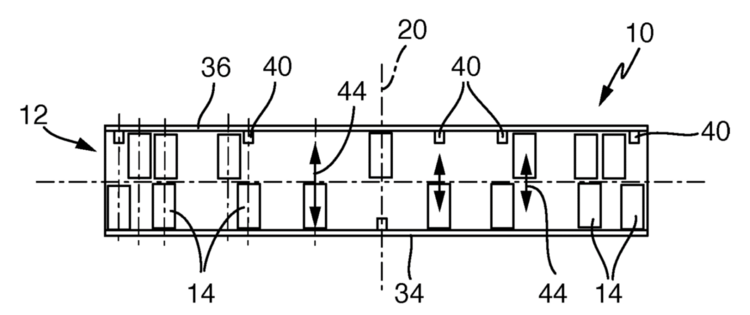Optimized fiber guidance in carbon fiber composite materials from braids
Abstract
A new design of impellers for braiding machines makes the braiding process much more flexible. This new method enables variable tying of the braids during the braiding process. In addition, it is possible to precisely guide large bobbins at higher production speeds without loss of quality.
Background
Fiber-reinforced braiding components have been an integral part of light-weight construction for a long time now. Not only in fields such as aircraft construction, braiding composite and hybrid components provide enormous constructive as well as safety-relevant advantages. However, their production is anything but simple. In particular in components which are designed for certain states of stress, the alignment of fibers in the braid is decisive for the component’s property.
Problem
For stress-optimized and weight-optimized components with complex designs high-precision braids need to be manufactured, which is not entirely possible with conventional braiding machines. These machines very often show disadvantages such as limited spool volumes, low operating speed of the impeller wheel or uneven braid pattern associated with varyingly load for the individual threads. Another disadvantage of conventional braiding machines is the inflexible guidance of the clappers on the impeller. This limits the respective areas of use and ultimately also the achievable quality of the products.
Solution
To overcome the above-mentioned problems scientists at the University of Stuttgart have developed a new design of impellers for braiding machines. Here the impeller consists of two rings which can be moved individually and which move in opposite directions. The bobbin-carrying clappers run along the rings and can even switch between the rings. By using this new bearing and independent range of movement of the bobbins, not only the inclusion of larger spools is enabled but, in particular, the textile tying of the braid can be changed as desired. In this way, quality and uniformity of complex braids are optimized, even with high production speeds. This allows a controlled fiber placement, even with curved components, or a better adjustment to constructive and technical braid requirements. And it provides a wide range of possibilities for affecting the fiber placement.
Advantages
- Variable tying of the braids is possible (changeable during braiding process)
- Precise guidance of large spools at high speed
- Separate movement ranges of the bobbins in dual-thread systems
- Higher production speed without loss of quality
- Additional degrees of freedom in fiber guidance
- Precise fiber placement for curved components
Fields of application
Flexible and efficient use of braiding machines for the production of braids for composite components out of delicate high-performance fibers.

